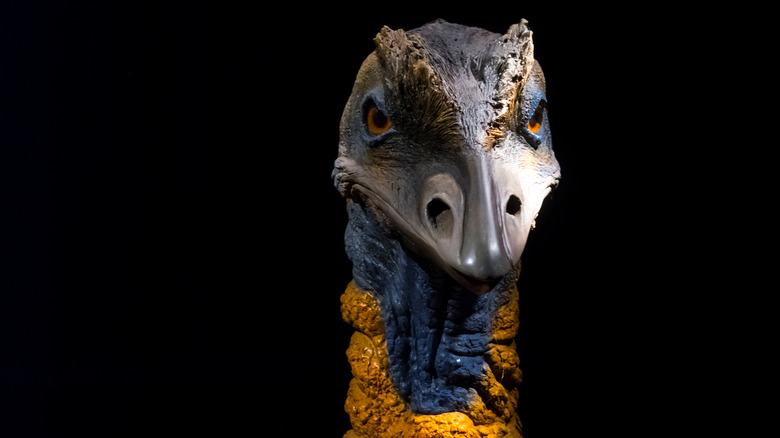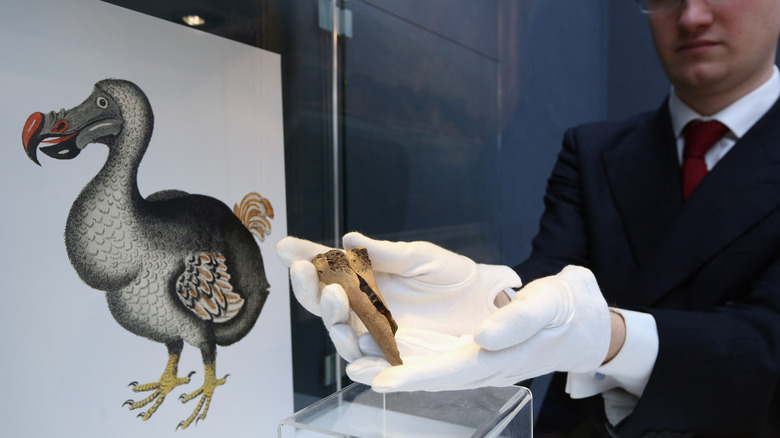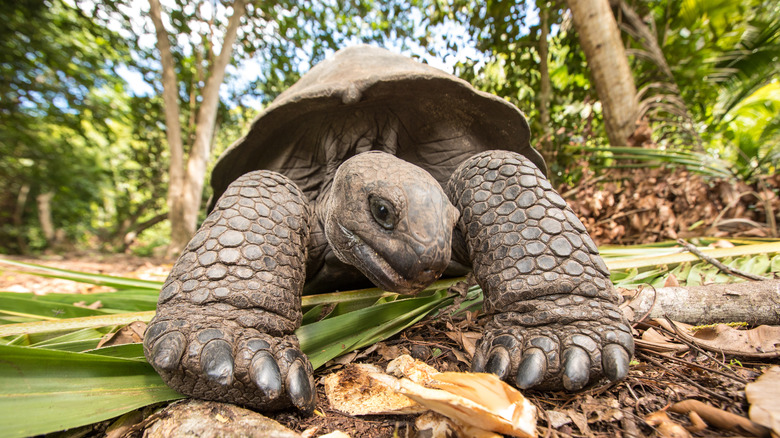Why Did The Elephant Bird Go Extinct?
It was the largest bird to ever walk the face of the Earth (via BBC). Looming over humanity at almost 10 feet in stature and weighing in at about 1,000 pounds, the elephant bird truly lived up to its name. Fossil evidence indicates that the massive flightless fowl was once abundant, particularly in the region we now know as Madagascar (via Britannica).
A wide variety of modern techniques such as carbon dating, molecular, and morphological techniques have been applied in order to gather information about the fallen flightless bird. Newer studies suggest there were somewhere between four and eight species of the elephant bird, and all of them likely lived peacefully side by side with humans for thousands of years.
As the search to determine the cause of the extinction of this massive species continues, we might be learning more about ourselves and our prehistoric ancestors than we bargained for.
A 'radically different extinction theory'
For years, the mysterious disappearance of the great elephant bird has been reportedly tied to various forms of human interference. Britannica names deforestation, climate change, overhunting, and habitat loss as a few of the most common. Until now, scientists have theorized some combination of these distinctly human components. However, that theory has suddenly shifted.
The BBC reports that as of 2018, scientists are seriously considering a "radically different extinction theory" that would put human beings in the Madagascar region nearly 10,000 years ago. This is 6,000 more years than scientists had initially suspected the presence of humans. At such a primitive time and with birds as large as those we've seen in fossils, this new theory harkens many questions about both species.
Were there really prehistoric human beings residing in the vast region of Madagascar who were so elusive, history almost didn't record them at all?
Prehistoric humans coexisted with Madagascar's megafauna
Mongabay reports that little is known in regard to this elusive tribe's prehistoric ways. Traces of their daily routine might be evident in the method they used to slice the elephant bird's bones and provide various cuts of meat. Culinary artists, crafty hunters, or peaceful animal lovers? Perhaps they were all the above.
Their presence in Madagascar suggests that initially, they lived lives of peaceful coexistence with the megafauna in the region. This megafauna also included giant tortoises and massive lemurs that are now currently extinct, in addition to the elephant bird. One of the biggest mysteries is how that peaceful coexistence was altered, leading to the complete obliteration of all the aforementioned species.
Evidence of a sophisticated prehistoric presence dating this far back in Madagascar challenges not just extinction theories, but also migration theories and even evolutionary theories, turning many modern scientific hypotheses into question marks rather than definitive facts.


